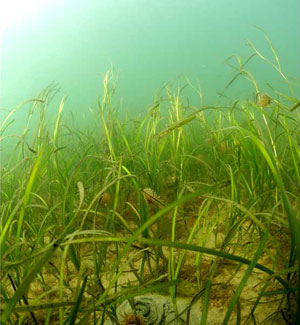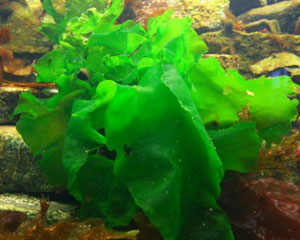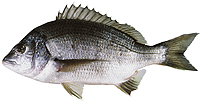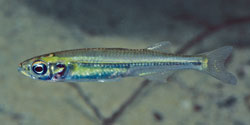Tom Parkinson's monthly column, introducing the diverse range of flora and fauna on show at Sanctuary Lakes.
 Water is the very essence of all life and in Sanctuary Lakes we have, as our central icon, a magnificent 60 hectare lake. The largest man-made water in the Melbourne vicinity, created over decaying salt evaporation pans of the long since departed Cheetham Salt Works.
Water is the very essence of all life and in Sanctuary Lakes we have, as our central icon, a magnificent 60 hectare lake. The largest man-made water in the Melbourne vicinity, created over decaying salt evaporation pans of the long since departed Cheetham Salt Works.
Thanks to our hard working and vigilant lake management team, our lake is now a very healthy and vigorous eco-system. In order to retain the perfect balance of water quality, there are two sources of water feeding the lake. Firstly stormwater runs in from the upstream catchment areas in Point Cook and flows directly into the lake. Extra sea water is pumped into the lake from the incoming tide of the Skeleton Creek estuary (Port Phillip Bay) ensuring the desired salinity level, water circulation and maintenance of a constant water level in the lake.
The inflow stormwater is normally high in plant nutrients (nitrogen and phosphorus) and encourages extensive growth of aquatic plants within the lake. There are numerous plants in our lake including some underwater flowering plants. We will discuss these in later Nature's Rubik editions, but today we look at the most common and aggressive seagrass, a member of the Ruppia species commonly known as Sea Tassel. As the name suggests, it is easily recognised by small Tassel like shape of its extremities.
The roots and rhizomes of the Sea Tassel help stabilise sediments in the beds of the lake, as well as trapping and recycling nutrients. Their leaves provide shelter, food and protection to many organisms, as well as an additional source of detritus. Sea Tassel also act as a filter, slowing overlying water and allowing any sediment that is suspended in the water to fall out into its roots, thus improving the water clarity.
 Keeping a healthy and vigorous ecosystem within our lake involves maintaining and harvesting the Sea Tassel beds. The frequency and depth of harvesting prevents the lake suffering regular blooms of problem microalgae.
Keeping a healthy and vigorous ecosystem within our lake involves maintaining and harvesting the Sea Tassel beds. The frequency and depth of harvesting prevents the lake suffering regular blooms of problem microalgae.
Another common plant that is also loved by the water fowls, ducks and swans is the Sea Lettuce algae. A member of the Ulva species it grows vigorously around the embankments and on the lakeside of the 16th, 17th and 18th fairways. It is the reason so many of our water birds can be seen grazing in the shallows. Once again the plant is easy to recognise. It is as its name suggests very similar in looks and colour to the lettuce.
The aquatic vegetation also supports a healthy food chain of small invertebrates (shrimps, sand worms, snails etc.) and plentiful shoals of fish. The two species best seen in the lake are the Southern Black Bream and the Hardy Heads.
 The Southern Black Bream is an endemic southern Australian fish. They have a long life cycle maturing at the around five years old. They spawn annually from October to December. Breeding fish will swim into the shallows where they shed their eggs, each fish producing up to three million per season. The eggs are small, hatching two days or so after fertilisation. The young bream spend the next four years of their lives living and often seen schooling over seagrass beds along the lake. By maturity they reach their full growth of between 25 to 33cms and weighing around 2 kilos. Southern black bream are known to live up to 30 years of age and continue breeding all their adult lives. Their main predators in our Lake are the Pelicans, Black and Great Cormorants. Besides their very fine taste on the dinner plate, they are a great sporting fish. But remember you have to have a licence to fish and the daily bag limit is 5 per person, with a minimum legal size of 28 cm.
The Southern Black Bream is an endemic southern Australian fish. They have a long life cycle maturing at the around five years old. They spawn annually from October to December. Breeding fish will swim into the shallows where they shed their eggs, each fish producing up to three million per season. The eggs are small, hatching two days or so after fertilisation. The young bream spend the next four years of their lives living and often seen schooling over seagrass beds along the lake. By maturity they reach their full growth of between 25 to 33cms and weighing around 2 kilos. Southern black bream are known to live up to 30 years of age and continue breeding all their adult lives. Their main predators in our Lake are the Pelicans, Black and Great Cormorants. Besides their very fine taste on the dinner plate, they are a great sporting fish. But remember you have to have a licence to fish and the daily bag limit is 5 per person, with a minimum legal size of 28 cm.
 Another predominant and abundant fish species in Sanctuary Lakes are the Hardy Heads, small (2-3cms) silvery with bold yellow strip. It is a very mobile, schooling species shoaling around the sea grasses. It is thought to be omnivorous. Spawns in spring and summer, with larval abundance during early November. An annual species with most fish reaching maturity, spawn and dying within a year. It is a favourite food for the Cormorants and the Black Bream. In turn the Hardy Head enjoys the eggs of another Lake species the Midges.
Another predominant and abundant fish species in Sanctuary Lakes are the Hardy Heads, small (2-3cms) silvery with bold yellow strip. It is a very mobile, schooling species shoaling around the sea grasses. It is thought to be omnivorous. Spawns in spring and summer, with larval abundance during early November. An annual species with most fish reaching maturity, spawn and dying within a year. It is a favourite food for the Cormorants and the Black Bream. In turn the Hardy Head enjoys the eggs of another Lake species the Midges.
There are over 17 different species of Midges living in and around the lake: You will be pleased to know that none of them bite humans. They can sometimes be a nuisance when of a summer evening they swarm into a cloud by the lakes edge, but unlike the mosquito they do not attack our flesh.
Adult midges lay their eggs on vegetation in the water. The eggs hatch after several days and as the larvae develop they either construct small tubes or burrow into the mud. They feed on organic matter suspended in the water or present in the sediment. The larvae can grow to 20 mm long, depending on the particular species. The larval stage lasts for as little as a few weeks in warm conditions to several months through cool periods. When larvae reach maturity they form pupae and swim to the surface of the water where they emerge as flying adults. They form swarms, most often at dusk, where they mate. The flying adults do not feed and if not eaten by the Sand Martins, Swallows and Artic Terns will only survive for about five days.
Midges like all the Flora and Fauna species are integral to Sanctuary Lakes' healthy eco-system. As with all the species that inhabit the Lake, they give and get from one another. The natural balance is assisted by our lake management team headed by Dr Nick O'Connor who regularly check the lake's health. Their work is creating a magnificent jewel for the Sanctuary Lakes neighbourhood that is an ever changing pleasure to wander round or simply sit and contemplate.